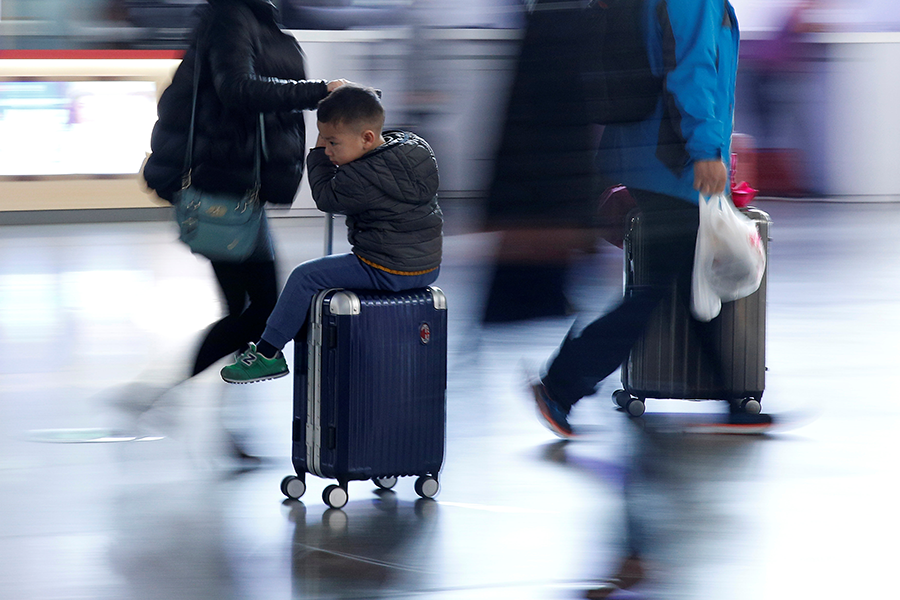Lunar New Year triggers world's largest human migration
Loading...
Saturday is Lunar New Year, and the world’s largest human migration is already underway.
Lunar New Year, often referred to as Chinese New Year or China’s Spring Festival although the event is celebrated across East Asia, is a 15-day holiday when people travel to their hometowns. During the vacations, travelers visit with family, share traditional meals, and clean their home.
“All the outsiders have left for home,” Yuan Shuizhen, a grandmother living in Shanghai, told NPR. “It’s much quieter this time of year – less crazy.”
The massive migration of people back to their hometowns for the holiday is called chunyun in Chinese. This year authorities are preparing for the largest chunyun ever: The Chinese Ministry of Transport predicts that 2.98 billion trips will be made between Jan. 13 and Feb. 20 – an increase of 2.2 percent from 2016, reports South China Morning Post.
According to estimates, 2.5 billion Chinese will travel home by bus during the holiday, while another 350 million will travel by train, and 60 million by plane.
Many of these trips will be made by students and migrant workers, traveling home from large cities. In China, more than 275 million migrant workers make up almost 36 percent of the workforce.
“I get to go back just once a year. It’s a long way,” Xu Zhengming told The New York Times while carrying a TV in Beijing West Railway Station to give to his father. Mr. Xu is traveling 20 hours home to a small village outside of Chengdu from Beijing, where he is employed as a construction worker.
“My father is in the countryside, and the family is hard up," he said. “He always wanted a flat-screen television, so I’m taking mine home to give him.”
The annual chunyun has become much more pleasant than in years past, as transportation has improved. Today, young Chinese are more willing to travel at off-peak times than their more traditional ancestors were, and the technology of rail trains has drastically improved. China’s high-speed rail now covers 12,500 miles of track and the transportation administration has scheduled more trains during the holiday season.
The holiday is always celebrated on the first new moon between Jan. 21 and Feb. 20. This year the holiday falls on Jan. 28, which will begin the Year of the Fire Rooster.
The Chinese zodiac cycle has 12 different animals, so the previous Year of the Rooster was 2005. Each animal year also rotates between five different element signs: Gold, Wood, Water, Fire, and Earth. Element-sign combinations only reoccur every 60 years, so the last Year of the Fire Rooster was 1957.
The Google search engine on Friday wished users in Hong Kong, Taiwan, and China a happy new year with a Google Doodle – the image surrounding the “Google” logo on its webpage – celebrating the Lunar New Year.
“With firecrackers, fried dumplings, and Fai Chun, today’s Doodle welcomes the Year of the Rooster,” writes Google in a press release. “Here’s to health, happiness, and good fortune in the new year!”








